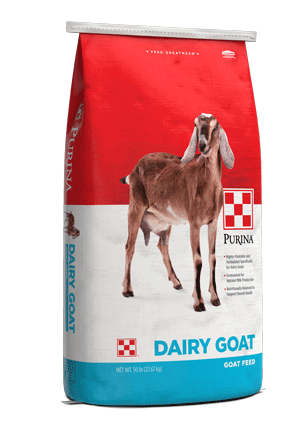
What Are Ketosis and Pregnancy Toxemia in Goats?
Wellness : Health

Pregnancy toxemia and ketosis poses a threat to goat health during late gestation and early lactation. These diseases are often (though not exclusively) seen in dairy goats, especially in higher producing animals. Help support your goats with proper nutrition and management during and after gestations to reduce the risk of these goat health challenges.
Learn what causes ketosis and pregnancy toxemia in goats and how you can manage through it:
Consequently, the dairy goat must call on body fat reserves for energy. The breakdown of large amounts of fat can result in compounds called ketones in the blood. Ketones can have a toxic effect in large concentrations.
Early symptoms of pregnancy toxemia and ketosis in goats include apathy, poor appetite, a decrease in milk production (if the goat is milking), a rough hair coat and disorientation. Work with your veterinarian if symptoms arise to administer glucose and electrolytes.
A small amount of fat (such as corn oil) in the goat feed will also help increase energy intake. Some producers give their does a little honey or molasses right after they give birth to provide immediate carbohydrate energy. Remember to consult your veterinarian before administering this type of a feeding program to ensure optimal goat nutrition.
Keep good records, so you know which does are prone to ketosis or pregnancy toxemia. Some does sail through pregnancy and lactation without problems and might put on unneeded fat if given extra energy in their feed.
Consult with your local Purina nutritionist for more industry-leading advice. Find more tips about caring for dairy goats during gestation.
Learn what causes ketosis and pregnancy toxemia in goats and how you can manage through it:
Causes of pregnancy toxemia and ketosis in goats
Pregnancy toxemia and ketosis in goats typically occur during late-term pregnancy and at the onset of lactation. During this life stage, dairy goats need considerable energy. Energy requirements are compounded in a doe carrying multiple fetuses because the kids compress the rumen, and the doe simply cannot physically eat enough to meet energy needs.Consequently, the dairy goat must call on body fat reserves for energy. The breakdown of large amounts of fat can result in compounds called ketones in the blood. Ketones can have a toxic effect in large concentrations.
Early symptoms of pregnancy toxemia and ketosis in goats include apathy, poor appetite, a decrease in milk production (if the goat is milking), a rough hair coat and disorientation. Work with your veterinarian if symptoms arise to administer glucose and electrolytes.
How to manage ketosis and pregnancy toxemia in goats
Feed more energy to the late-term pregnant and early-lactation doe to help address ketosis or pregnancy toxemia. When fed at the right amounts, grain is much higher in energy compared to forages and will take up less room in the rumen. Gradually increase the grain portion of the diet and reduce the hay portion. If this is done too quickly, the rumen pH could change rapidly and lead to more problems. Feeding some of the forage in pelleted form and providing more frequent, smaller meals will help to maintain dietary fiber levels in a lower volume of goat feed.A small amount of fat (such as corn oil) in the goat feed will also help increase energy intake. Some producers give their does a little honey or molasses right after they give birth to provide immediate carbohydrate energy. Remember to consult your veterinarian before administering this type of a feeding program to ensure optimal goat nutrition.
Keep good records, so you know which does are prone to ketosis or pregnancy toxemia. Some does sail through pregnancy and lactation without problems and might put on unneeded fat if given extra energy in their feed.
Consult with your local Purina nutritionist for more industry-leading advice. Find more tips about caring for dairy goats during gestation.


.png?width=300&height=430&ext=.png)